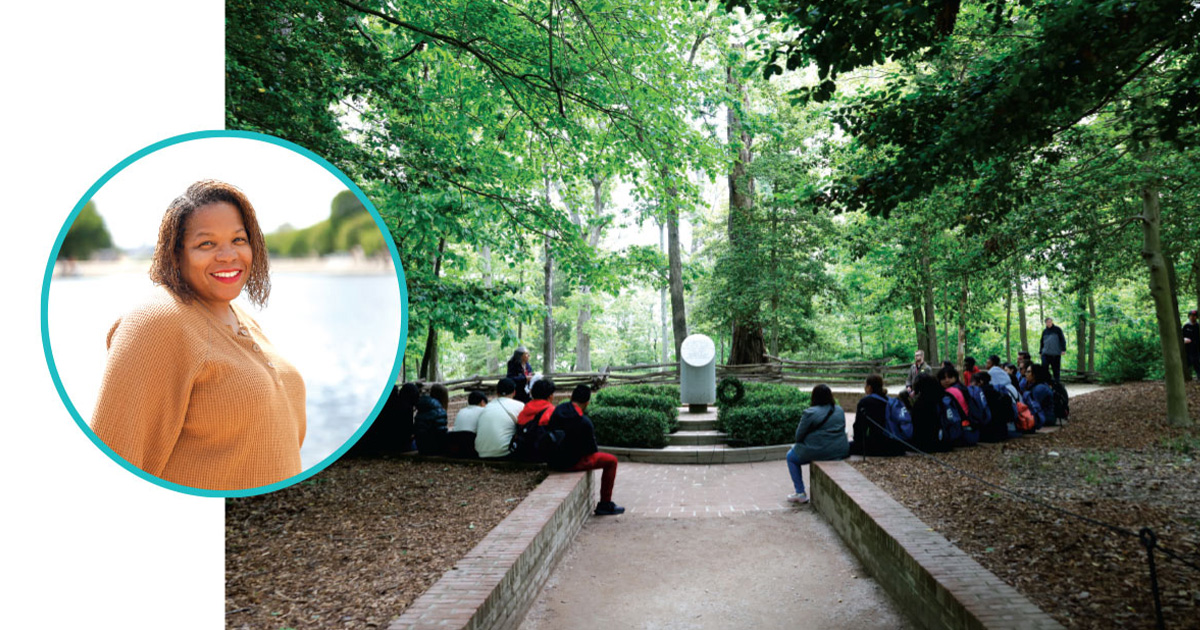Tamika Bradford’s students knew the very basics of George Washington’s legacy, but hardly the full extent. That’s partly why Bradford took her class from Bronzeville Classical School in Chicago to Mount Vernon in Virginia, seated right on the Potomac River.
At this historical landmark with a complex history, the students experienced the Telling Their Stories tour.
This powerful tour helps visitors reshape long-held perceptions toward one of the country’s most prominent figures and is core to the estate’s mission. The historians there are committed to telling the deep and complex history of Washington’s home by honoring the culture and legacy of everyone at Mount Vernon.
“We always learn about George Washington and these very simple facts about who he was,” Bradford said. “This tour gave the students a larger view of what it took for him to be who he was. It was behind the scenes of everything that everybody was doing for him, for him to be successful. It talked about the daily lives and the contributions of enslaved people, the legacy of everyone that lived there.”
Her students knew he owned slaves, but it was made much more real by seeing and experiencing where they actually lived and worked—touching the bricks with still-visible fingerprints left by the slaves who made them. They heard stories of the struggles, achievements, and hopes of enslaved individuals, like Ona Judge, who served as Martha Washington’s personal attendant at only 10 years old.
There was also a powerful ceremony at The Slave Memorial, which was built in a cemetery where archeologists found 87 graves.
“The students were active participants. They were able to read a speech that was reflective of the suffering enslaved people went through, and that was definitely a pivotal moment within the tour,” Bradford said. “A few students volunteer and read the tribute, then two of the students go up and lay a wreath near this tomb/memorial, and then our guide gave more history about what the tomb represented, and some of the slaves that were in the log as living there in the 18th and 19th centuries.”
Bradford is an English Language Arts teacher, and worked with a Social Studies teacher at Bronzeville to prepare for the trip. He wasn’t able to join, but Bradford wanted to connect the trip itself to what they learned in the classroom, so she had students present their experience to the other teacher. They created a document of what was discovered in class, first, and then added details of what was discovered during the tour. “It helped the social studies teacher fill the gaps for them if there was anything that was missing, and to provide that aha moment within his reflective practice.”
It was a powerful trip that helped students learn so much in just one visit—not to mention everything else the group experienced on the tour. Now, Bradford is looking forward to the next trip, as more and more students feel not just comfortable but excited to travel. Bronzeville is visiting both Washington, DC and New York City in late May, and Bradford is excited to once again bring what her students learn in the classroom to life.
Written by Josh Veal. This story originally appeared in the May 2024 issue of Teach & Travel.
Photo Courtesy of Tamika Bradford.




